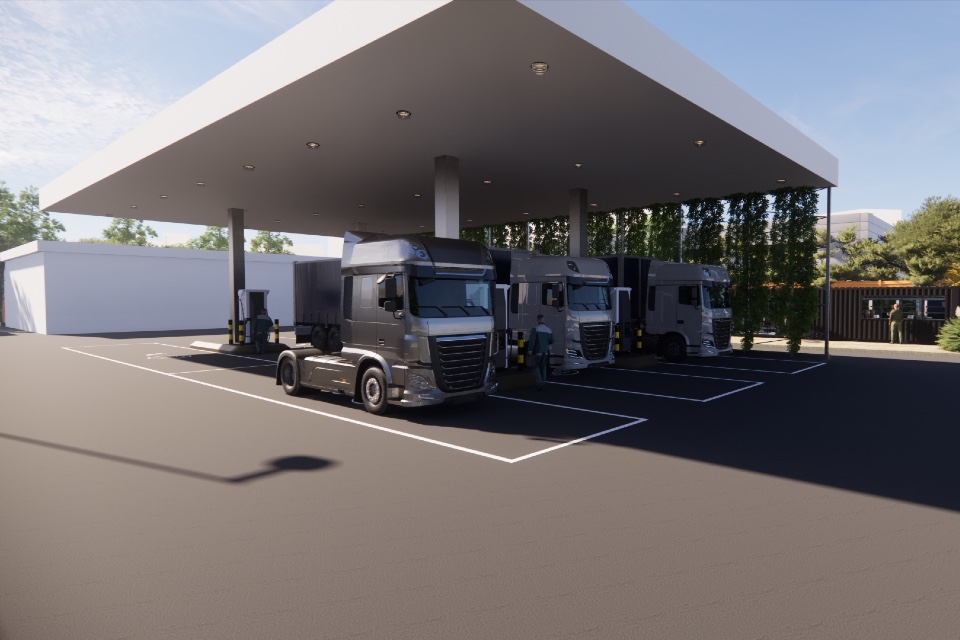SSE Energy Solutions to build first electric HGV charging hub
https://energymanagementsummit.co.uk/wp-content/uploads/2023/11/sse-Tyseley-Park-proposed-render.jpg 960 640 Stuart O'Brien Stuart O'Brien https://secure.gravatar.com/avatar/81af0597d5c9bfe2231f1397b411745a?s=96&d=mm&r=gSSE Energy Solutions will build its first fully electric charging hub for heavy goods vehicles (HGVs) at Tyseley Energy Park in Birmingham in the West Midlands.
The hub, located near the busy A45 in the east of the city, will accommodate up to four electric HGVs at a time and house powerful 360 kW chargers capable of dispensing up to 300 kilometres of charge within 1-2 hours, depending on the type and size of the vehicle and battery being charged.
With just 0.3% of HGVs on Britain’s roads currently electric, the project is a key milestone in SSE’s strategy to help decarbonise the road freight sector. It is estimated that diesel-run HGVs account for 17% of all road transport emissions in the UK despite making up just 5% of vehicles on its roads.
SSE has already partnered with a number of transport solutions and logistics businesses across the UK, including global logistics firm DHL, to accelerate the transition to battery-powered HGVs.
The company plans to build 500 ultra-rapid charging hubs for electric cars and commercial fleets powered by traceable, renewable energy in the UK and Ireland by 2030, with a number of sites already operational.
Established in 2010, Tyseley Energy Park is owned by the Webster and Horsfall Group and is home to the UK’s largest hydrogen refuelling station and a 10 MW waste-wood biomass power plant which generates enough electricity to power 17,000 homes.
SSE’s charging hub at the site will include a canopy which is to be formed from a combination of galvanised steel and sustainable timber and will incorporate a rainwater harvesting system to capture surface rainwater and irrigate a living green wall within the site. This means a living habitat for insects, bees, birds and bats.
Ben Brickwood, EV project development manager at SSE Energy Solutions, said: “The development of our first all-electric HGV charging hub at Tyseley Energy Park is a crucial step for SSE as we continue to enable the decarbonisation of Britain’s transport infrastructure and industries. Drawing on our expertise and experience with bus depot electrification and the roll out of EV passenger car hubs, this project demonstrates our commitment to accelerating the transition to electric for all vehicles and building the framework needed to support their rollout.
“We believe that through investments like this, and by working closely with partners like Webster and Horsfall, we can play a leading role in driving down transport emissions and building a net zero future in Birmingham, the West Midlands and beyond.”
David Horsfall, Director of Property, Tyseley Energy Park, said: “We are delighted to welcome SSE to Tyseley Energy Park and see the launch of their ambitious new HGV charging hub. This will be an enormous boost for the area which was recently re-branded as the Green Energy Innovation Quarter for Birmingham. This first of a kind HGV charging station will complement the clean fuels already on offer at TEPs low and zero carbon refuelling station and is a major step forward in the region’s efforts to improve air quality and decarbonise.”





